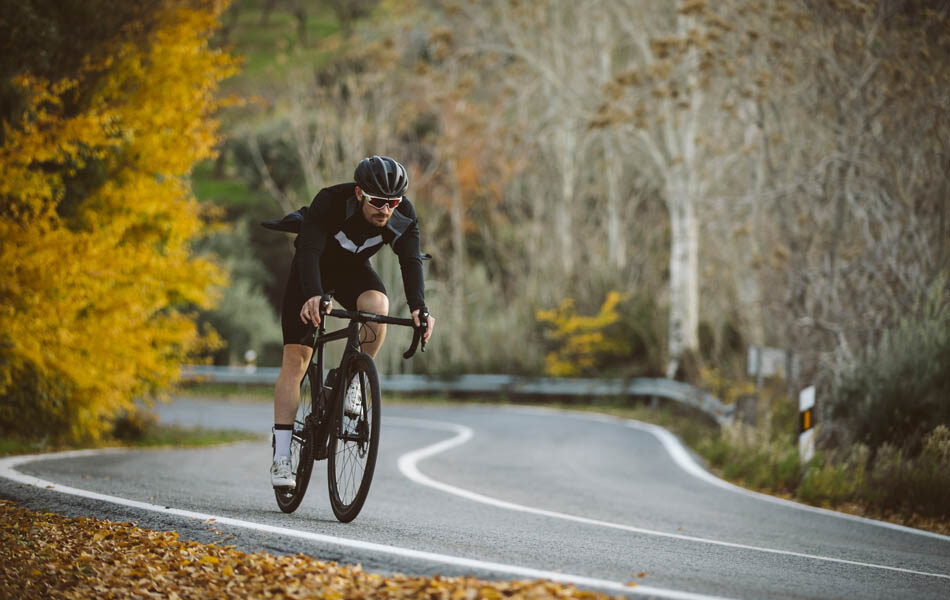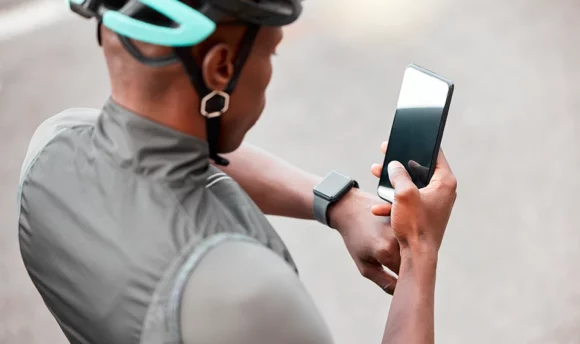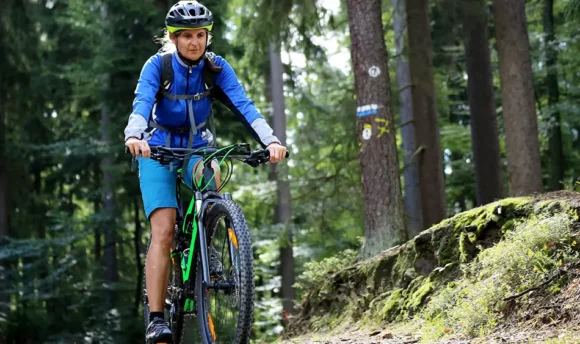Does Bike Riding Build Muscles? Benefits and Reasons to Cycle
Cycling is a form of exercise many people use as a way to relax or get around the city, but its uses go far beyond just being fun.

If you’re on a journey to lose weight and build muscle, you will be met with a ton of different ways to do so.
With the option of cycling, lifting weights, running, and more, it’s hard to know which exercise is the best fit for you and your particular fitness goals.
Keep reading to learn more about how effectively bike riding builds muscle, as well as which muscles benefit most from a regular cycling practice so you can decide if it is the best fit for you.
Does Bike Riding Build Muscles?
Yes, bike riding builds muscle. However, the bulk of this growth will be seen in the lower half of the body.
The high level of resistance that your legs experience while pedaling causes the muscles in your legs – predominantly your quads, hamstrings, and glutes – to bulk up quickly in an effort to deal with this extra load.
This is especially true if you are biking outdoors, uphill, or on uneven terrain.
You can also expect to notice an increase in strength in the muscles of the upper body, as well as the stabilizing muscles of the core.
Which Muscle Group Does Cycling Target?
Although the pedaling motion involved in riding a bike targets mostly the leg muscles, you’d be surprised how much of a full body workout it is and how many different muscle groups cycling hits.
If increasing the strength of your upper body is one of your goals, you will be able to do so even more quickly if you ride outdoors regularly, especially if these bike rides involve climbing up hills.
During all your rides, though, the bulk of the movement involved in pedaling will be carried out by the thigh muscles since they are responsible for pushing the pedals on your bike down and forward – though almost every other muscle in the lower body will also be used at some point throughout the ride.
In the lower half of the body, you make use of the calf muscle, glutes, and hip flexors.
The calf muscles – soleus and gastrocnemius – are responsible for keeping the ankle stable while you pedal.
The hip flexors play a role in the flexion of the hips that draw the knees upwards before being driven back down on the pedal stroke. This movement is stabilized by the glutes.
In the upper half of the body, you also make use of the biceps, triceps, and even the deltoids, which are the muscles located on top of the shoulder joints. This is due to pushing and pulling against the handlebars while increasing speed or riding uphill.
Cycling also targets the spinal erector muscles in the back as well as the oblique abdominal muscles in the core, both of which are responsible for stabilizing the body as you pedal. Your ab muscles also aid in pedal strength.
5 Reasons and Benefits Why You Should Cycle
Still not sure that biking is right for you? In this section, we will outline just a few of the many health benefits that can be reaped through regular cycling sessions.
#1 Biking is a low-impact exercise
Low-impact refers to the amount of stress that a certain activity puts on your bones and joints while you do it. Running outside, for example, is a high-impact sport due to the jarring impact of your feet hitting the ground and the subsequent stress that it can put on your knees and shins.
One of the biggest benefits of cycling is that it is a low-impact exercise since your feet remain on the pedals at all times, and the pedals are moving in a constant circular motion through the air.
Low-impact exercises are perfect for anyone who deals with knee issues, is currently overweight, or is recovering from an injury. It is an exercise that can help us burn fat and build leg muscle and strength before taking on heavier-hitting exercises like running.
#2 Improves cardiovascular health
In addition to improved cardiovascular endurance, which helps you bike faster and for longer, aerobic cycling can also prevent cardiovascular diseases like strokes and heart attacks.
Cardiovascular disease is the leading cause of disease annually and is responsible for as many as 17.9 million deaths every year. Regular aerobic exercise helps to stop and, in some cases, even reverse the effects of a sedentary lifestyle.
The fatty deposits that build up in the walls of our arteries when we aren’t getting regular exercise are responsible for things like heart attacks and strokes. Luckily, these can be prevented with regular exercise, helping reduce the likelihood of complications further down the line.
#3 Strengthens the leg muscles
If you are working on developing leg muscles, cycling is definitely the exercise to help you do so. The best part is that it does so without causing unnecessary stress to the joints in the lower half of the body.
The legs are often an area of the body that make people feel self-conscious, either because of cellulite or due to their shape and size. If this is an area of your body you would like to make improvements to, cycling is a wonderful exercise to use to shape the legs and make them appear more toned.
Not only that, but anyone wanting to get back into better shape or get their bodies ready for more intense, high-impact exercise can use cycling as an intermediary exercise to strengthen the leg muscles and build up muscle endurance before doing so.
If quick muscle building in your lower body is your goal for cycling, then using a cycling app that makes use of things like interval training programs can help you reach this goal more quickly.
Cycling.Diet is an app that creates personalized running programs for its users depending on fitness goals that are unique to each user. It is great for anyone who wants to take their running goals more seriously and could use some help staying consistent.

- Offers cycling exercise programs that are fully personalized
- Provides meal plans, and recipe books that are created by professionals (cycling trainers, nutritionists)
- Helps to maintain motivation during the plan period
#4 Good for your mental health
This benefit will be even more noticeable for anyone who chooses to do their cycling outside, as this allows them to get out of the house and into green space.
As simple as it sounds, getting outside is clinically proven to reduce stress and improve your mood, making outdoor cycling a perfect option to wind down at the end of a long day.
Regardless of where you decide to cycle, though, you can feel good knowing that any exercise you choose to do will reduce feelings of anxiousness, depression, and loneliness. Even if you decide to partake in cycling on a stationary bike at home or at the gym.
#5 Prevents unnecessary weight gain
It’s well known that regular exercise combined with a healthy diet is the best way to prevent obesity and the negative side effects of being overweight.
Diseases related to being overweight, like diabetes and heart disease, are responsible for as many as 2.8 million deaths annually. This means that finding new ways to take better care of our bodies in order to prevent the onset of these diseases is more important than ever.
Cycling is one of the best exercises for burning body fat, with a 30-minute, moderate-intensity cycling session burning as many as 288 calories. This is more calories than you can expect to burn jogging, and cycling is also far less impactful for the joints than running.
A Word From Our Coach
There are many different reasons why you might want to start riding a bike.
Most of us turn to exercise to help us get back into shape, giving us the chance to reduce our body weight while also having the opportunity to build bigger and stronger muscles in our legs.
For others, though, cycling could be an excuse for you to get outside where you can soak up some vitamin D or give you the chance to take care of your cardiovascular health, thus setting yourself up for longevity in the future.
Regardless of your particular goals for your fitness journey, getting back into the habit of regular exercise is never a bad idea.
You don’t have to bike 20 miles every day to notice the effects. Even a few leisurely bike rides a week or adding biking into your daily commute can put you back on the fast track toward better health.
Bottom Line
Not only does cycling help you build muscle in the lower half of the body, but it is also effective at strengthening the core and even the arms.
Should you decide to start biking regularly, you’re sure to notice a big difference in the strength and even the size of many leg muscles, including the glutes, quads, hamstrings, and calf muscles.
You can also expect to notice big improvements in your cardiovascular health, the number of calories you’re burning every week, and feelings of peace and relaxation. Best of all, you can expect all of these benefits from a low-impact exercise that is good for your bones and joints.

















































 Select your language:
Select your language: 








